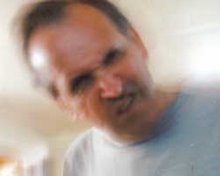Félix du Temple de la Croix, another wiley Frenchman, was tinkering with model planes and building aircraft in the middle to late 18th Century. A member of the French nobility, he studied at the French Naval Academy and later fought in the Crimean War among other conflicts of the era. He was away from France for years and eventually became captain of his own frigate. Upon his return in 1841 he became involved in the royalist fighting going on at the time and had to leave the navy. Good thing seeings how he wanted to fly.
With the help of his brother, Louis, he built what was to become the first airplane to fly under it's own power. This model aircraft, powered by a tiny steam engine, took off unaided, flew for a bit then landed (by NOT crashing). The year was 1857. There have been models that were thrown, or otherwise launched into the air, and landed by exploding into bits, but this was the first to do the smooth transition from ground to air and ground again.
Like many flyers of the day, Felix was frustrated by crappy power plants. You could get away with clockwork engines for tiny models, but all they had to work with really were steam engines. The early internal combustion engines showed promise, but were notoriously unreliable and under powered. So steam it was.
He decided to design and build an ultra compact engine that reduced the weight and upped the juice as much as possible.
With the help of his brother they built a machine capable of carrying men in 1874. They called it the "monoplane". It was built mainly of aluminum, had a 13 metre wing span and weighed a remarkable 80 kilos! (about 200 pounds). An amazing feat of design and assembly.
This plane achieved flight on a couple of occasions, but the durations were short and control was questionable. But, hey, this was 1874.
Largely forgotten for his flying, his steam engine design was patented in 1876 and went on to establish him as a world class engineer.



No comments:
Post a Comment